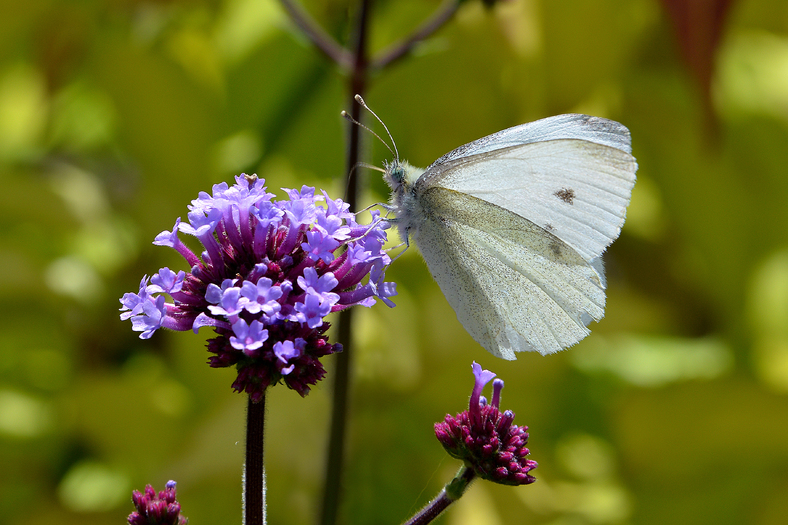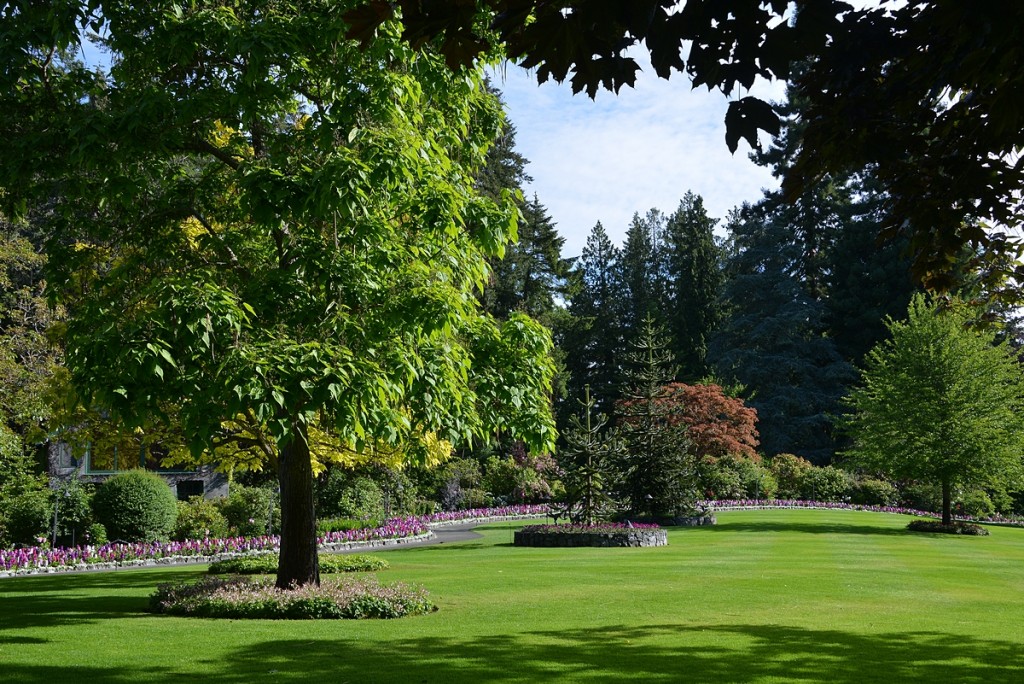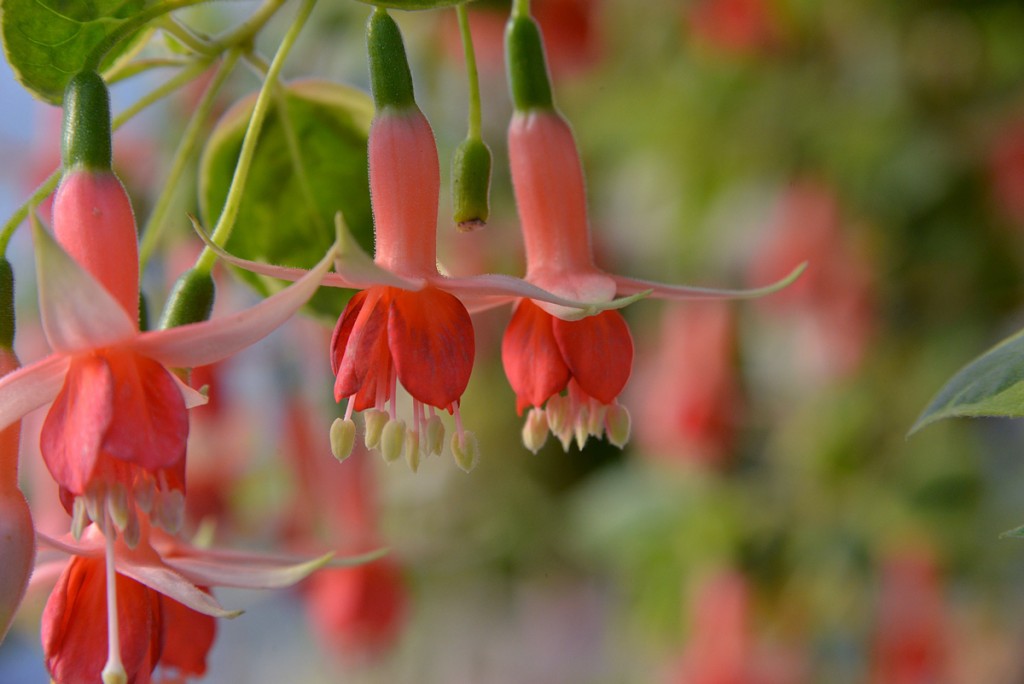What’s in Bloom Now? Garden Updates June 17 – 23
By Thea Hegland
While I write this, there is only one week left until the official start of summer and it seems everything in The Gardens has been carefully put in its proper place for the season.
Now we can relax a little and concentrate on general garden maintenance while Mother Nature does its thing. With a few days of warm, sunny weather in the upcoming forecast, all the newly planted annual flower beds will fill out and the nearly 300,000 plants will soon become a colourful explosion of flowering bliss.

Now, all these flowers can only look so good when the perfect stage is set; it seems The Gardens has everything going for it, starting with the stunning natural surroundings and the meticulously kept lawns.
Our lawns are very impressive and a fundamental part of the ambience here at The Gardens. Visitors often ponder why our lawns look so good and the answer is quite simply proper care and maintenance.
The Secret to Our Lawns

A dedicated staff of two full-time workers as well as two seasonal full-time workers tend to the lawns here at The Gardens.
The grass seed is a general west coast landscape mix consisting of Rye, Kentucky Blue and Fescue. A general over seeding is applied with a 3-way Rye mixture, fertilized with Organic Plus 24-4-12 and 8-2-3. During the season, the main lawns are mowed twice per week.
The Fuchsia

Flowering highlight this week is the amazing Fuchsia collection at The Gardens. We grow approximately 50 different varieties; these include the incredible hanging baskets, garden standards and hardy shrubs. We grow our own Fuchsia’s here from cuttings which we take from our own plants in September and again in January. The standards are returned to the safety of the greenhouses each fall and return to the garden for the blooming season.
With Father’s Day this weekend, what a better place to come for a stroll, relax and admire the beautiful plants and perfect lawns of The Gardens? Give Dad some ideas…
Plants that are currently blooming
- Abutilon
- Alocasia (Elephant’s ear)
- Astilbe
- Anthriscus sylvestris ‘Ravenswing’
- Aquilegia (Columbine)
- Astrantia
- Baptisia (False indigo)
- Begonia
- Brugmansia (Angel’s trumpets)
- Calceolaria (Scotsman’s purse)
- Cephalaria gigantea (Yellow scabious)
- Centaurea montana
- Chionanthus virginicus (Fringe tree)
- Cladatris lutea (Kentucky yellowwood)
- Clematis
- Colocasia (Taro)
- Cornus kousa (Korean dogwood)
- Davidia involucrata (Dove tree)
- Delphinium
- Deutzia
- Dianthus
- Digitalis (Foxglove)
- Disporum (Fairy bells)
- Eremurus (Foxtail lily)
- Fuchsia
- Heliotropium (Cherry pie plant)
- Hemerocallis (Daylily)
- Hydrangea petiolaris (Climbing Hydrangea)
- Illicium
- Impatiens
- Iris
- Kalmia (Mountain laurel)
- Kolkwitzia (Beauty bush)
- Laburnum (Golden chain tree)
- Lantana
- Lobelia
- Maglieta
- Matthiola (Stock)
- Meconopsis (Blue poppy)
- Nectaroscordum
- Pachystachys lutea (Lollipop plant)
- Paeonia (Peony)
- Paeonia lutea (Tree peony)
- Papaver (Poppy)
- Pelargonium (Geranium)
- Pentas
- Pericallis (Painted daisy)
- Petasites
- Philadelphus (Mock orange)
- Phlomis
- Polemonium (Jacob’s ladder)
- Podophyllum (Mayapple)
- Poncirus trifoliata (Hardy orange)
- Primula (Primrose)
- Prostanthera rotundifolia (Mint bush)
- Rheum
- Rhododendron
- Rosa (Rose)
- Salvia
- Schizanthus (Butterfly flower)
- Skimmia japonica
- Spartium junceum (Spanish broom)
- Spiraea (Spirea)
- Stachys marcantha
- Styrax japonicus (Japanese snowbell)
- Syringa reticulata (Japanese tree lilac)
- Thalictrum (Meadow rue)
- Tradescantia (Spiderwort)
- Viburnum
- Viola
- Weigela
- Wisteria

